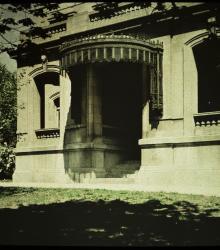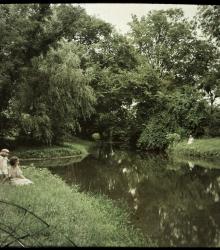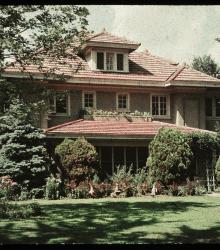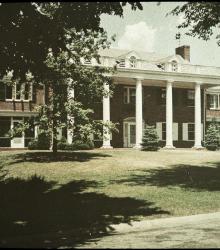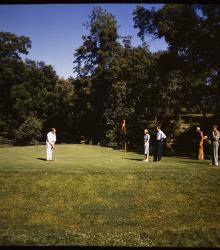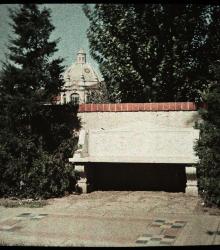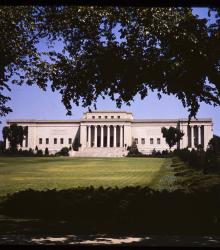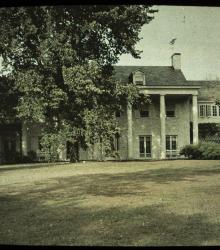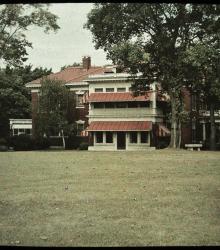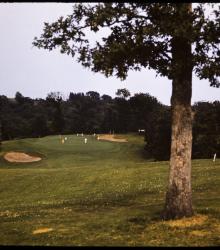An autochrome photograph of to the west entrance of R. A. Long's residence. Long was co-founder of Long-Bell Lumber Company.
Trees
A damaged autochrome photograph of two women and one child posed by the entrance to the Kansas City Country Club. This view looks west over Brush Creek and towards the entrance.
An autochrome photograph of James Neal Foster's residence, taken from the southwest. James was secretary of the Foster Lumber Company and his wife Sadie Ross Foster was president of the Kansas City Browning Society.
An autochrome photograph of Harry C. Alley's house taken from the south-southwest in 1933. Alley was president of Rankin-Benedict Underwriting Company.
A color glass plate positive photograph of a crowd watching Bob Busler and Bob Willits playing golf at hole #5 at the Mission Hills Country Club.
A color glass plate positive photograph of a man putting on the second hole of the Kansas City Country Club Golf Course.
An autochrome photograph of a marble bench in the Country Club Plaza on Ward Parkway between Wyandotte Street and Central Street. This vantage point faces north-northwest with the building at the northeast corner of Alameda Road (now Nichols Road) and Central Street in the background.
A color glass plate positive photograph of the Nelson Galley of Art (now known as the Nelson-Atkins Museum of Art), taken from the south.
An autochrome photograph of Mrs. Mary Z. Hibbard's residence, taken from the south.
An autochrome photograph of Anne D. Paxton's residence, taken from the south. Her deceased husband, John G. Paxton, was a lawyer and city councilman.
An autochrome photograph of James A. Reed's residence, taken from the southeast. Reed was a lawyer, county prosecutor, and mayor of Kansas City.
A color glass plate positive photograph of people playing golf at the tenth hole of the Swope Memorial Golf Course. This vantage point faces north-northwest towards downtown Kansas City, Missouri in the far background.
